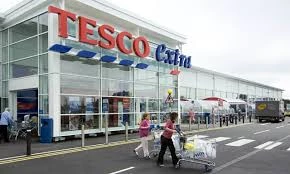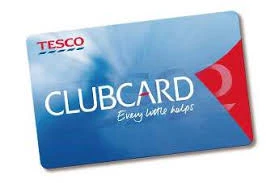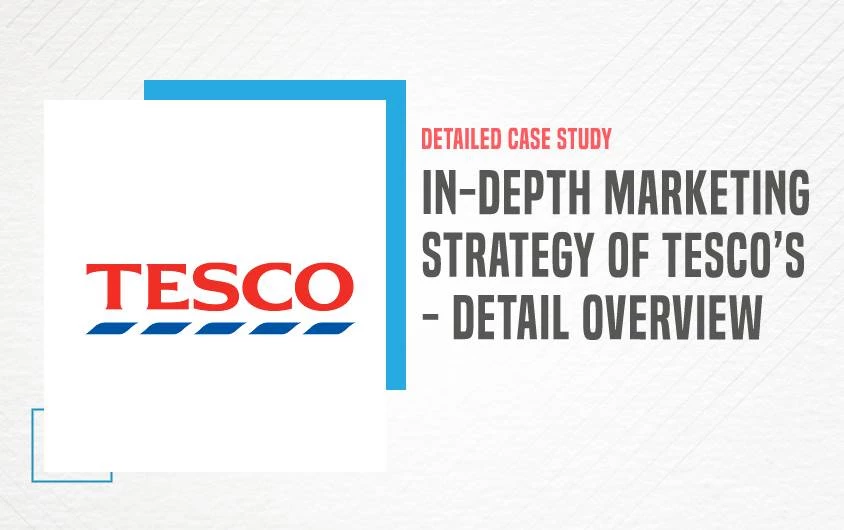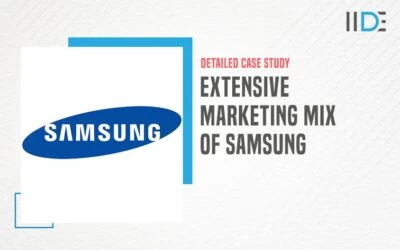Introduction
Tesco, a multinational retail company by adopting a customer-focused approach and employing effective marketing strategies has helped them to become a leading player in the supermarket industry industry. The brand focuses on providing its customers with the best possible value for money, by providing a diverse range of products at competitive prices that make it easy for customers to find what they are looking for.
In this case study, we shall discuss how Tesco achieved this feat by looking at its latest news, competitors, marketing strategies, and online retail presence.
About the Company

Tesco is a retail company headquartered in England. The company has 7,000 stores worldwide, employs over 500,000 people and serves tens of millions of customers each and every week. Its core business is grocery retail but the company has also diversified into the retail banking and assurance industries. For the purpose of this blog, we shall only be focusing on Tesco’s retail business. Tesco’s stores stock over 40,000 different products. Their procurement teams work with tens of thousands of different raw materials that are transported internationally every day.
How did a company setting up market stalls transformed into a global retail mammoth? To get a sense of their business and operations and the marketing strategy of Tesco let us first take a look at their marketing mix.
What’s new with Tesco?
- Tesco Media and Insight Platform have entered into a partnership with Pintrest. This will enable the leading CPG brands to leverage the power of Tesco’s Clubcard data to deliver personalized and relevant ads.
- Tesco has announced that it will be running home deliveries with 500 electric vans for the company’s Sheffield Extra store. This makes it the first in Yorkshire that have a fully electric fleet.
- Tesco Ireland plans to invest €80 million this year in 8 new stores, upgrade projects for 50 years, and maintenance expenses.
- Tesco customers will notice a major change post-announcement made by Tesco to introduce a major shift of milk caps in supermarkets.
- Tesco is introducing a new in-store campaign where they will recycle broken plastic toys into books and reading resources for UK schools.
Tesco’s Buyer Persona

Buyer’s Persona
Name:
John Smith
Place:
London
Age:
30 years
Profession:
Software Engineer
Motivation
- Convenience & efficiency in grocery shopping.
- Quality products at affordable prices.
- Interested in saving money
- Wants to maintain a healthy lifestyle
Interest & Hobbies
- Cooking new recipes.
- Home organization & meal planning.
- Finding deals & discounts.
- Exploring Food Trends..
Pain Points
- Limited time due to busy work.
- Difficulty in making choices amidst numerous options.
- Concerns about product freshness & quality.
- Uncertainty about navigating promotions, offers & loyalty programs.
Social Media Presence
- Follows lot of food & lifestyle influencer
- Engages with discount & coupons
- Joins local community group for food recommendations
Marketing Mix of Tesco
A marketing mix is an important tool for determining how a product is marketed or can be marketed in the future. The marketing mix consists of the 4 P’s of marketing: Price, Product, Promotion, and Place. Let us now analyse Tesco’s marketing mix.
-
Tesco’s Product Strategy
Tesco has majorly expanded since its inception and now provides a wide range of products in categories including food, electronics, health, books, apparel, home and decor, party and gifting, sports and fitness equipment, beauty, jewellery, baby products, etc. It’s quite clear that Tesco caters to various needs of consumers from across segments and is a retail giant. Tesco has its own brands for these categories, namely Tesco Loves Baby, Tesco Lotus, Tesco Kipa, F&F Clothing, Tesco Value, etc. Tesco’s wide range of products and own brands are supported by a strong digital marketing strategy. By using digital marketing effectively, brands can reach a wider audience, build brand awareness, generate leads, drive sales, improve customer service, and understand their target audience.
-
Tesco’s Pricing Strategy
The Tesco pricing strategy adopts an efficient supply chain network that allows them to take advantage of the economies of scale and offer products at the lowest possible prices. Tesco does not compromise on quality for the sake of price. They regularly entertain feedback from consumers and try to cut down on irrelevant costs to provide low prices. Tesco, thus, follows the cost leadership strategy.
Did you know? 🧐 – Brands can use digital marketing to promote their products and offers through marketing channels such as social media, email marketing, and search engine advertising. This can help them to attract new customers and encourage existing customers to buy more.
-
Tesco’s Place and Distribution Strategy
Tesco has 6,900+ stores in 15+ countries including the UK, Ireland, Hungary, Slovakia, France, Japan, etc. Tesco has various types of stores offering varying products and services. Namely, Tesco Metro, Tesco Express, Tesco Extra and Tesco Superstore.

Tesco superstores are large supermarkets that sell groceries and a range of non-food items. Tesco Metros are smaller stores situated in towns and city centres. Tesco Express is an even smaller store that essentially deals in high-margin products. Products at Tesco Express are costlier than the other Tesco stores.
Tesco Extra are large stores that carry a wide range of items including groceries and general merchandise, allowing customers to complete all their routine shopping under one roof.
Tesco also has an online store for customers who wish to transact online and get their groceries and other products delivered. To expand its distribution network it has also partnered with many retailers and delivery companies including Amazon which offers delivery of groceries through Amazon Fresh.

-
Tesco’s Promotional Strategy
Tesco focuses on attracting customers through its signature low prices strategy. Tesco makes extensive use of print and media advertising as a tested channel to send promotional messages to current and potential consumers. As of today, Tesco maintains a balance between its traditional marketing and digital marketing campaigns. The company hugely relies on promotional offers to attract and retain customers. They regularly provide ‘buy one get one’ offers and discounts, online as well as in their stores.
Must Read: 10 Major Digital Marketing vs Traditional Marketing Differences in 2024
For loyal customers, Tesco has an option of availing club cards. The Clubcard loyalty program is a key part of its marketing strategy. The program rewards customers for their loyalty with discounts, points, and other benefits.

Tesco launched a campaign called Better Baskets, which aims to address the challenges that customers face when trying to make healthier choices while shopping. According to research conducted among Tesco customers, 86% of them expressed a desire to eat more healthily, and 77% of them want Tesco’s assistance in achieving this goal.
This is how Tesco manages to maintain its position as a market leader with affordable products while ensuring accessibility and quality. This is also visible in their marketing strategy, let’s take a deeper look at that.
Marketing Strategy of Tesco
Tesco’s marketing strategy accurately targets its ideal consumers with the help of its well-positioned brand image. Marketing strategy of Tesco is formulated based on the following:
Customer Segmentation: Based on the diverse needs and preferences of their customers, Tesco can put customers into different segments. Different marketing messages can be crafted to meet the needs of those segments.
Loyalty Program: Tesco’s Clubcard loyalty program is the most popular in the UK by offering personalized discounts, rewards, and special offers to encourage repeat purchases from customers. This program has 19 million members, which generates a revenue of billion pounds for Tesco each year.
Marketing through Multiple Channels: Tesco uses a combination of traditional and digital marketing channels such as TV, radio, emails, social media, etc., as well as in-store promotions to reach a wider customer base.
Value for Money: Tesco has always positioned an image in the minds of its customers for offering good value for money. This is reflected in the form of providing high-quality products at affordable prices.
Private Label Brands: Tesco has a range of private-label brands that sell a variety of products at a price that is lower than other national brands. These private-label brands are preferred by customers who want a good deal for the products purchased.
CSR activities: Tesco is involved in various corporate social responsibility (CSR) activities that focus on sustainability, community engagement, and charitable work. Highlighting these initiatives taken by the company will help to establish a positive brand image in the minds of the customers. Customers will appreciate the efforts taken and the company will receive a positive word of mouth.
Digital Marketing Strategy of Tesco
Campaign Name: Prices that take your back
What was the campaign about?
This campaign is one of the best examples of a successful marketing campaign that was launched in 2019 to celebrate Tesco’s hundredth anniversary as well as compete with retailers that offer discounts like Lidl and Aldi.
Which medium was used in the campaign?
Tesco used social media to engage with its audience and made alterations to its offers based on the response received. For instance, the price of Freddo chocolate was reduced to 10p, and a competition to find out the best snacks from Skips and Frazzles. Customers were able to resonate with it which led to an increase in engagement.
What was the outcome of the campaign?
The campaign was a huge success and Tesco made a sale of around half a million in one week and had 4,55,000 people participating in the snack competition. Tesco witnessed its highest-ever ROI along with a positive customer perception of Tesco’s value of money across all metrics.
Campaign Name – Alia’s ‘worth the wait’ Samosas campaign
What was the campaign About?
Tesco used a variety of media to launch Alia’s “worth and wait” campaign with the motive to reach a wider audience and connect with the audience at an emotional level. The release of the capaign was perfectly timed with the Muslim holiday of Eid al-Fitr, that received a strong support by a strong public relations campaign.
Which medium was used in the campaign?
Television
A 30-second Ad was aired on television that featured a young Muslim woman named Alia who is making somasas for her family.
The commercial was able to successfully portray the information of joy, warmth, and nostalgia by showing Alia’s family sitting around a table to relish samosas.
Digital
The campaign was launched and run on digital platforms, such as social media and Youtube that made use of videos, images and recipes related to samosas.
Source: Tesco
The video and images shared on social media, helped to generate a lot of buzz around by making use of interactive elements, such as a quiz that included questions recipe related to samosas. This helped to improve engagement with the viewers, making them feel a part of the campaign.
Top Competitors
Sainsbury’s: It is one of the main competitors of Tesco in UK known for its extensive network of supermarkets and general merchandise stores.
Asda: The company offering a diverse range of products and services, including groceries and clothing is one of the major competitors of Tesco.
Waitrose: The company known for providing high-quality products and an amazing shopping experience, competes with Tesco in the premium grocery market.
Ocado: This is an online grocery retail store. It competes with Tesco on online shopping and delivery services.
Iceland: This company is well known for offering frozen food that competes with Tesco in the frozen food segment.
Failed Campaigns
Tesco TV 2004
This in-store TV network launched Tesco in 2004. This network showed a combination of editorial and advertising content but did not recieve a good response from the audience.
Many people complained about the editorial content being irrelevant and annoying, which did not cater to the shopping needs of the customer. Hence, as a result of this response Tesco TV was discontinued in 2009
Tesco’s Clubcard Plus
This was a program launched in 2017 offering a number of benefits to its members in the form of discounts on fuel and groceries. But this campaign was not well received by the customers.
Many people noticed that the campaign fees were high and the benefits didn’t seem to provide value for money. This resulted in the discontinuation of Tesco Clubcard Plus in 2019.
Tesco’s Christmas 2015 AD
This ad featured a group of children singing a song on how they would rather eat instead of going to school. This ad received a lot of criticism for being insensitive to parents and teachers, and so was eventually removed.
Tesco’s Online Services and eCommerce Strategy
Tesco has a sophisticated online strategy that enables seamless digital shopping. Tesco’s eCommerce strategy reflects the brand’s commitment to value and convenience. Website visits are just as efficient as in-person purchases. Tesco’s website, just like its stores, is easy to navigate.
Tesco’s online business has performed extremely well over the years. As a result, the company’s online sales increased by 15% in Ireland and South Korea. Tesco has also achieved double-digit growth in the UK grocery market. Since 2010, Tesco has consistently improved its online business to provide customers with a worthwhile online shopping experience.
Tesco has also launched Click and Collect services which enable its customers to procure their groceries online and collect them from any store operated by Tesco.
Tesco Direct also has an online platform that allows customers to procure electrical goods, clothing and general merchandise.
The Tesco app is also a major hit and a go-to for customers for direct purchases and payments. The app launched a stand-out feature in 2020 that created a lot of buzz. They introduced the option for customers to shop in-store by simply scanning the products as they shop, through the app. Once done, the customers can simply checkout via self-service or cashier counters. And make the payment through the mode of their choice. This proved to be extremely convenient and quick since people did not have to wait in queues to await their turn.
Along with the many strengths and advantages that we looked at, Tesco also has several weaknesses and threats. This is why we also conducted a SWOT analysis of the company.
Conclusion
Tesco’s corporate philosophy is essentially cost leadership with an emphasis on availability, variety, and customer service. Tesco is well-known in the United Kingdom and internationally for its focus on value, comfort, and affordability. The Clubcard is critical to the supermarket chain’s continued success because it keeps consumers coming back for more sales. Tesco has built a very loyal customer base and a global brand as a result of its customer-centric approach. Its popularity, on the other hand, is based on its image as a convenient and affordable chain. The retailer promotes customer-oriented activities on its website and in its stores in order to make every shopping experience as smooth and rewarding as possible.
This straightforward yet successful strategy will ensure that the retailer continues to remain at the forefront of the industry.
If you liked our analysis of Tesco’s marketing strategy, be sure to check out the series of case studies on various other companies’ strategies written by our students.
If you want to learn how to create such campaigns and studies, be sure to explore various institutes that offer online digital marketing courses in India. So start your journey in upskilling yourself today!
Thank you for reading! We hope you found what you were looking for and learnt something new from this case study. If you did, be sure to share, comment and let us know your feedback!








Thank you for the article. It is so informative. I have cited the article in a paper that I am writing in my studies. I have given complete acknowledgement as per academic requirements of my school. Thank you.